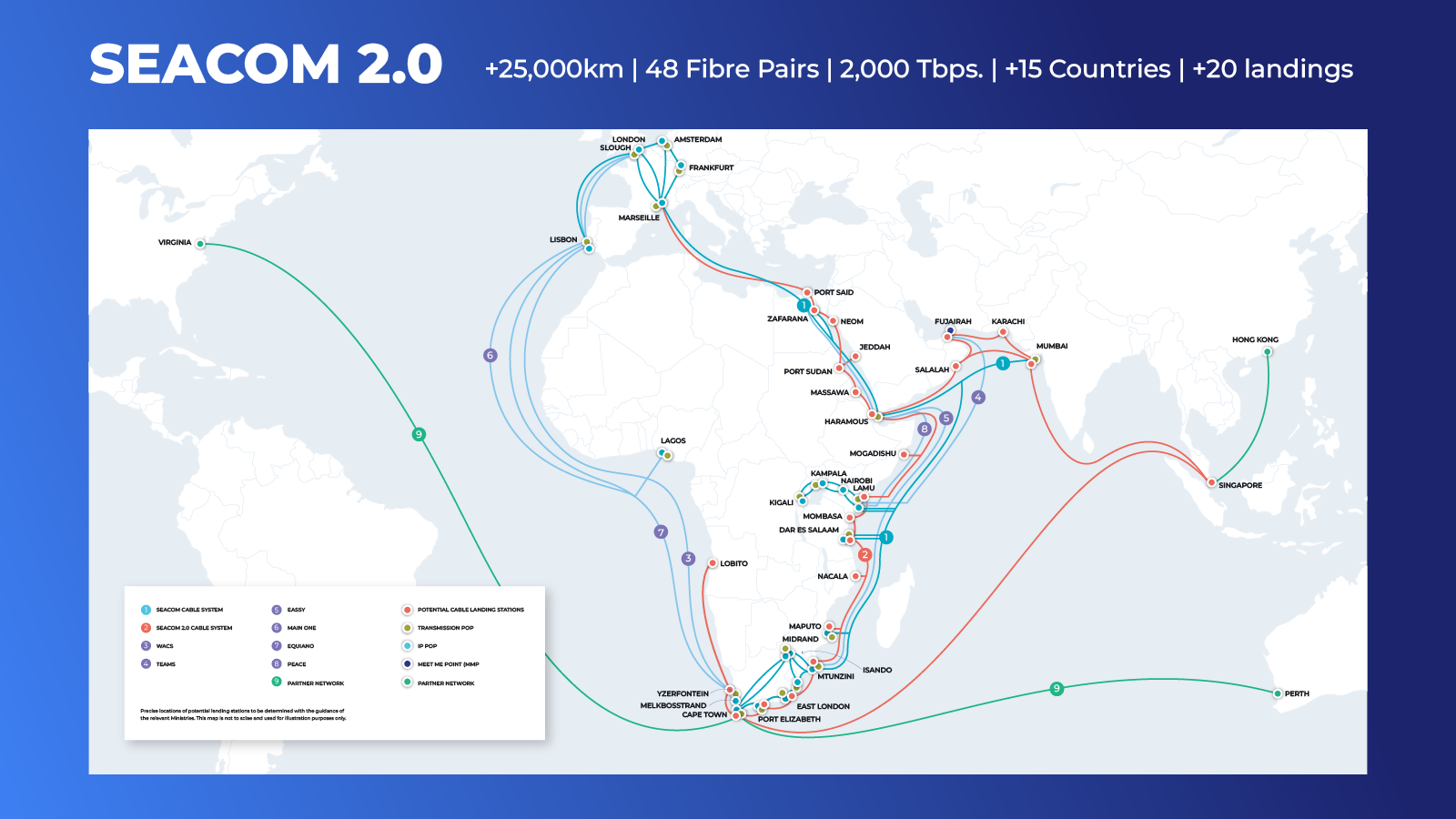Planned route for Seacom’s new subsea cable (Source Seacom)
African subsea cable operator Seacom has announced plans for a major new international cable system, Seacom 2.0, which will connect Europe, the Middle East, Africa, and Asia. Spanning 25,000 kilometers (15,534 miles), the cable will feature 48 fiber pairs and 20 landing points across 15 countries. The project aims to meet rising demand for AI, cloud, and real-time data services, linking countries in the Indian Ocean region thus reducing connectivity costs by up to 300% and fostering innovation in cloud services, fintech, and regional tech ecosystems.
The cable route begins in Marseille, France, travels through the Mediterranean and Red Sea, then splits into two branches: one heads west to Singapore via India and Pakistan, and the other connections in North, West and South Africa.
In a press release, Seacom, CEO Alpheus Mangale, described Seacom 2.0 as “More than a cable; it’s the foundation of a shared AI-driven future ensuring Africa and its neighbours control their digital destinies. By enabling open access and regional integration, we are creating a system that is resilient, sustainable, and inclusive.”
By enhancing regional digital sovereignty, open access, and a resilient inclusive network, the cable is designed as a high-capacity, low-latency network tailored for AI workloads, with plans to convert landing stations into ‘AI communication nodes’ connecting African sovereign AI infrastructure to global data hubs.
The project has several strategic objectives: boost GDP, following subsea infrastructure that has already raised African GDP per capita by over 6%; support smart infrastructure, enabling IoT-enabled ports, AI-driven city planning, and edge computing; and empower SMEs by providing enterprise-grade connectivity for cloud access, global customer engagement, and integration into digital trade platforms.
Seacom 2.0 builds on Seacom’s existing network, launched in 2009 with Tata Communications. The company owns cable landing stations along Africa’s east coast and holds capacity on major international cables including WACS, TEAMS, EASSy, Main One, Equiano, and Peace.. Seacom’s investors include Industrial Promotion Services (Aga Khan Fund for Economic Development), Remgro, Solcon Capital, and Sanlam.
Seacom 2.0 is in a critical position for the projected 10 billion AI agents by 2030 and a growing world population, with the Indian Ocean Basin expected to host half of humanity by 2050.




